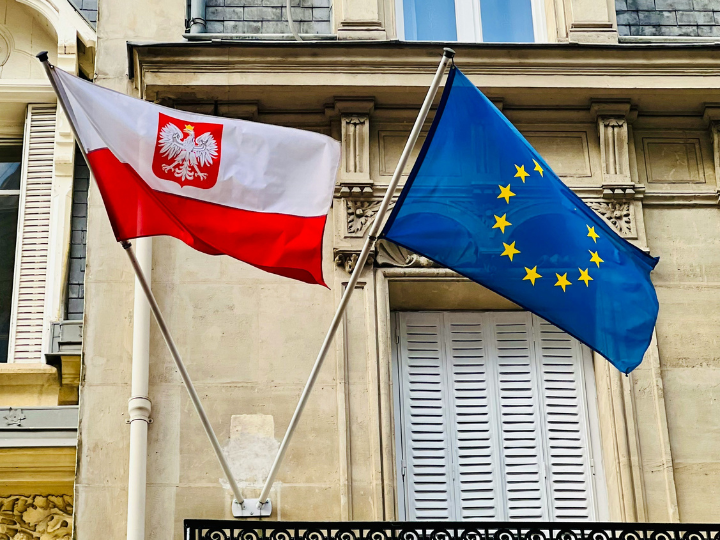by Maya Ben Dror*
The COVID-19 pandemic is a stress test to the resiliency and sustainability of transportation networks and infrastructure. Responses to it demonstrate the value of public-private partnerships and the integration of appropriate enabling environments and technologies to address what one United Nations official called the “biggest threat facing humanity over the long term”: climate change.
The soonest way to address climate concerns is by ensuring stimulus packages are sustainable. While it is true that the European Commission is using the vision of Europe’s Green Deal to guide the stimulus plans designed to recover European economy, there is still more opportunity to bring about a more resilient and sustainable future through Covid-19 recovery packages, especially when it comes to shared, electric and automated mobility.
Advancing policies that propel a transition away from low occupancy fossil-fuelled cars and toward the adoption of more sustainable shared, electric and autonomous mobility solutions can accelerate the transition to emission-free transport in cities by three fold and help the transportation sector achieve climate emissions targets consistent with 1.5 degree scenarios.
The European Commission can do this effectively through three key policy levers which include aligning COVID-19 recovery measures with Green Deal zero-emission mobility actions, supporting an optimal expansion of electric vehicle charging infrastructure, and improving the economics of the transition to EVs, particularly through high-use vehicles.
The first step the European Commission can take is to continue to ensure industry recovery measures are aligned with Green Deal zero-emission mobility ambitions and to build on the unique regulatory momentum that the pandemic created for cities. It has been demonstrated time and again that contribution of passenger transport to climate change and air pollution can be minimized by setting clear targets and transition pathways to reduce zero emission. Consistent with the Green Deal objectives, the commission has already confirmed that its EU 2020/21 car CO2 regulations will remain. It is critical to ensure that any long-term post COVID-19 recovery measures maintain the 2050 carbon neutrality objective. This is how a wider variety of better performing, and more attractively priced zero-emission models will be introduced into the market sooner that without emission regulation.
The European Commission should further embrace a collaborative transition to shared zero-emissions rides, and close the structural gap between car-utilization, multimodality, and public transit through the adoption of transportation demand management (TDM) approaches. Transportation externalities such and congestion and emissions can then be addressed through re-pricing of the road, and dynamic prioritisation of access to the street and curb.
Another key enabler to shared e-rides and high mileage fleet uptake the European Commission should prioritize is appropriate electric charging infrastructure networks consisting of slow-, fast-, and rapid-charging stations. In the near to medium term, high-mileage drivers will benefit most from access to at-home or near-home overnight infrastructure to give them highly affordable access to charging. However, complementary infrastructure deployment strategies for enabling charging between rides in strategic locations in cities is critical in order to fully enable electrification of shared and high mileage mobility operations such as taxies, mobility service providers or shared fleets.
Successful national and local deployments of rapid charging networks for electric taxi operations in pick-up and drop-off hotspots show that strategies to mitigate charging queues and costly local electrical infrastructure upgrades are also needed. Early research also suggests EV infrastructure requirements for commercial mobility applications, such as ride-hailing, can be met through a combination of existing urban fast-charging infrastructure at higher utilization levels and a modest investment in new, purpose-built installations located near areas of high urban mobility demand. By encouraging collaboration between charging providers, property owners, grid operators, and mobility service providers, an efficient charging scheduling and management can be achieved.
The third measure the European Commission should take is improving the economics of electric vehicles. Though greater variety of more affordable longer-range EVs are becoming increasingly available, high upfront cost, varying charging costs, and unknown depreciation costs, remain substantial barriers to EV adoption.
To decrease upfront purchase and lease fees, the European Commission should consider offering tax exemptions, financing support for owners or fleet programs, and vehicle replacement programs for electric vehicles. Furthermore, by introducing zero and low emission areas, the utilisation costs of electric (particularly for shared-use) cars can be significantly lower than that the cost of using conventional (often single-occupancy) cars. Additionally, EV purchase, lease and rental financing programs and other fiscal incentives should be promoted. In particular, lower-income groups, who are highly represented in mobility professions, such as taxi, ride share and other for-hire driver, will benefit from support to switch to zero-emission operations. Cross-industry partnerships, from banks to vehicle suppliers and fleet operators, will be needed to enable these financial incentive strategies.
The path to achieving zero emission mobility by structurally guiding both higher occupancy levels across modes and greater adoption of zero emission vehicles, requires a package of policies suited to local contexts. Support for a phased-in electrification of high mileage and high occupancy rides can promote the European Green Deal ambition to ensure a clear pathway from 2025 onwards towards zero-emission mobility.
This article is derived from a letter the World Economic Forum’s Global New Mobility Coalition sent to the European Commission ahead of unveiling of the recovery plan early May, representing over 150 for-profit and non-profit mobility stakeholders.
*Lead on Shaping the Future of Mobility at the World Economic Forum
**first published in: www.euractiv.com




 By: N. Peter Kramer
By: N. Peter Kramer

